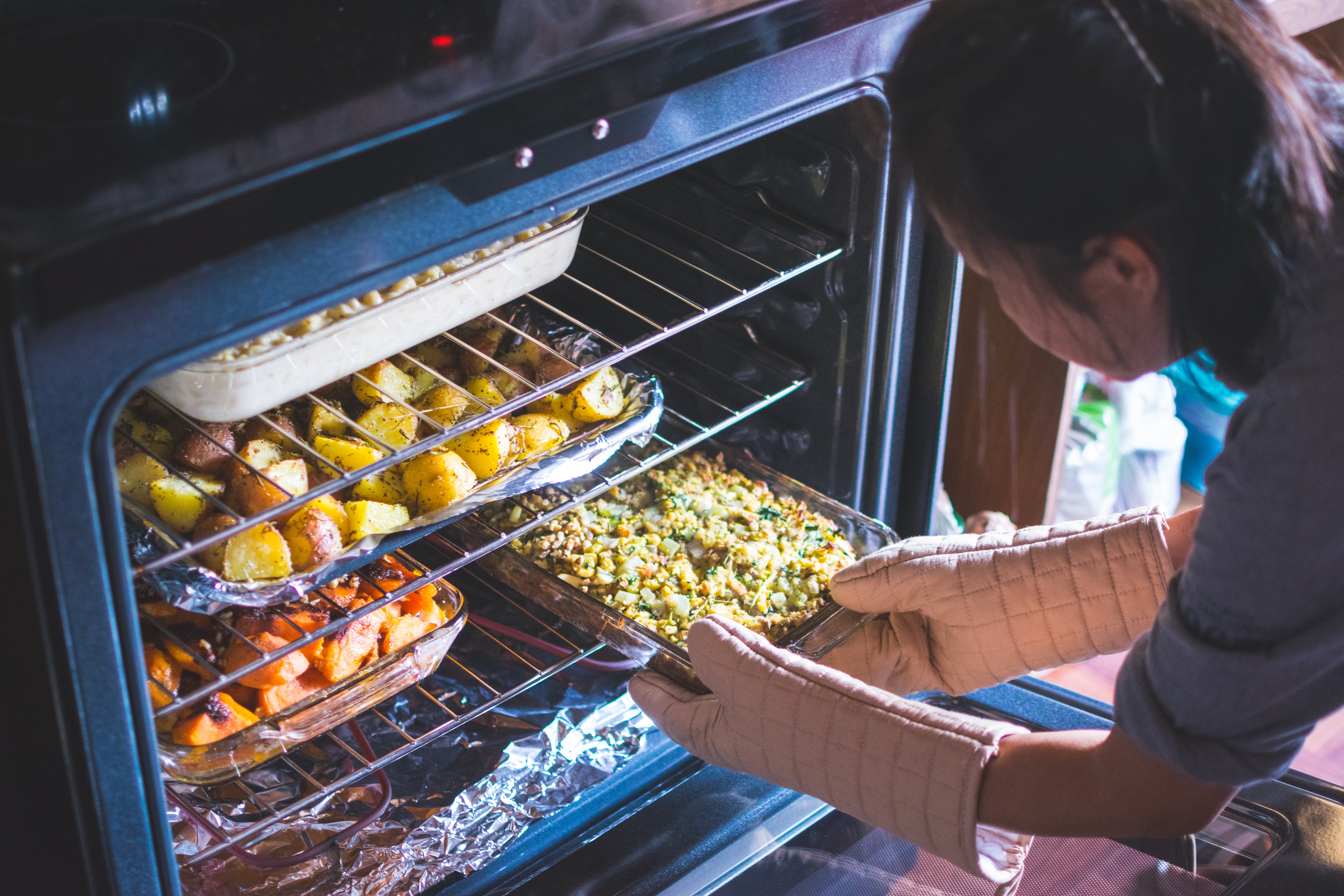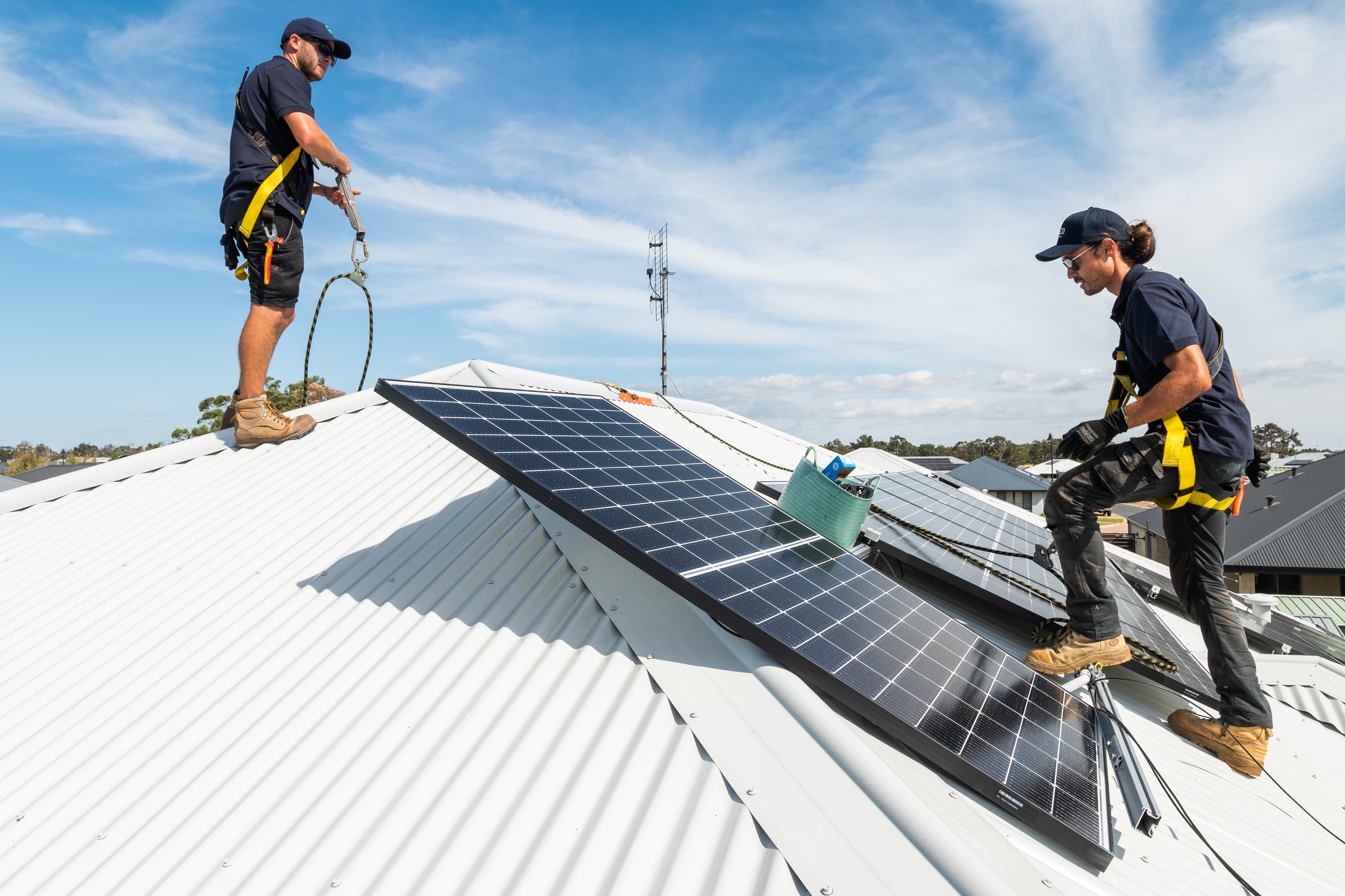Household appliances make up the lion’s share of your home’s electricity use. Fortunately, all electrical appliances can be run by solar power. At the end of the day, the energy created by your solar system can power everything electric on your property! So the more you run on electricity, the more you’ll save with a solar + battery system.
It does, however, pay to know the best way to utilise solar power for your appliances. In the right hands, solar energy can significantly cut down electricity bills.
What’s the best time to use solar energy for household appliances?
Because your solar system generates energy from the sun (and the sun isn’t static), there are certain periods of the day where you’ll create more solar power than others. As a general guide, the optimal ‘solar window’ – your system’s peak generation period – is 10 am to 2 pm.
What are the best household appliances to run with solar power?
Knowing the peak period of solar energy generation means you can taper how you use your appliances accordingly. An example is using ‘heavy draw’ appliances (those which run for a short time but require a lot of power to get going, such as an oven or washing machine) while your system’s creating the most solar energy. Doing this will save you from using your solar battery’s stored energy (if you have one) or paying for electricity from the grid. (Another helpful tip is to charge your electronics during these peak generation periods, running them off their batteries in the evenings.)
Peak solar power generation times also highlight the importance of having a solar battery. Being able to store your solar energy to use in the evenings is one of the keys to saving money on your electricity bills. Without a solar battery, you’ll have to pull your electricity from the pricey grid as soon as the sun isn’t shining down on your solar panels.
What is the feed-in tariff? And why does it impact me?
You might be wondering that if this is the case, why anyone would have a solar system without a battery? Well, it has a lot to do with feed-in tariffs.
Feed-in tariffs are a payment for every kWh of generated electricity a household sends to the grid. In peak periods, solar systems without a battery could generate more power than they can use, so your system would push this excess energy to the grid. The money received from the feed-in tariff is, in theory, meant to compensate for the household’s expense when pulling from the grid on evenings or overcast days.
In relation to appliances, it’s better to use our household appliances before 3 pm, as the feed-in tariff is higher after this time.
Back when solar was just starting to get going in Australia, feed-in tariffs provided a household with a significant amount of money for every kWh of electricity they sent to the grid. Unfortunately, the feed-in tariff has been severely declining over the last few years. It’s constantly fluctuating, but in 2022, Western Australians can expect to receive 2.25 cents for every kWh they transfer before 3 pm and 10 cents per kWh after 3 pm. So in terms of using your appliances, it’s better to run them before 3 pm so that you’ll receive the higher feed-in tariff for your exported electricity.
Why has it declined? In simple terms, two reasons: installed residential solar systems have risen from 0.2% to 20% nationally; more homes are pushing electricity to the grid. We’re now at a point where the grid sometimes struggles to cope with the load when there are too many solar exports, leading to the possibility of solar owners being charged for the energy they push to the grid!
A solar battery frees owners of this complex situation – storing excess energy so it can be used when necessary to power your appliances and home in general!

How do I calculate the power consumption of my appliances?
An appliance will come with a watt (W) or kilowatt rating (kW), e.g. how much energy it takes to power it. A thousand watts equates to one kilowatt. You’ll also see the unit kilowatt-hour (kWh) on your electricity bills and appliance guides. The name says it all: kilowatt-hour is the sum of kWs used over time.
So, if you have a 3.5 kW A/C unit and you run it for two hours, you’ll use 7 kWh of energy:
3.5 kW x 2 = 7 kWh of energy.
You’ll be able to find out your appliances’ power ratings in the instruction manual or on the Energy Rating sticker.
What household appliances use the most energy?
Learning what uses most of your electricity is key to utilising solar energy effectively and, in general, saving money on your bills. So let’s look at what household appliances are driving your electricity consumption up.
Air conditioner/heater
Cooling and heating your home requires substantial electricity, with A/Cs and heaters being among the most expensive appliances to run. Additionally, ducted systems generally use more energy than single units.
An A/C can make up around a third of your energy consumption annually.
Fridge
Because fridges need to be run continuously, they also take up a meaningful slice of your home’s overall energy consumption.
A single fridge can use between 339kWh - 513kWh annually.
Oven
If you have an electric oven, you’ll see your electricity usage increase in cooking times. This is because an oven requires a significant amount of electricity when turned on to heat up. In general, it’s a heavy draw appliance that requires a large amount of power to run.
An electric oven can consume anywhere between 1 kWh to over 4 kWh depending on power draw and duration.
Washing machine
Likewise, a washing machine is also a heavy draw appliance that uses a high amount of energy over a short period. A typical washing machine will use around 2 kW of power. So if your standard washing cycle goes for an hour and a half, you’ll use 3 kWh per cycle.
Dryer
It’s worth choosing the washing line over your clothes dryer as a dryer uses anywhere between 1.8 kWh - 5 kWh of electricity. If you’re in the market for one, don’t hesitate to pay a little more for an energy efficient heat pump dryer – you’ll make your money back (and then some) from the savings you’ll accumulate.
How can I find out if my home appliances are energy efficient?
Energy Rating stickers are the best way to quickly assess the efficiency of an appliance, providing the capacity in kW and a star rating that shows its ranking in regard to the rest of the market – an easy way to compare between makes and models.
It’s always a good idea to do additional research as well. You can research the average energy consumption for various appliances, how much energy they use on standby (yes, appliances can still use energy when not in use; it can account for as much as 3% of your additional consumption), and how best to use them to reduce your electricity bills.
How much solar energy will my solar panels produce?
Solar + battery systems come in various sizes. However, as a general rule, 1 kW of solar energy will translate into around 4 kWh of electricity for your home. So if you have a 6.6 kW solar system (such as Plico’s Energy Maker system), you can expect to create around 26.4 kWh of energy on a cloudless day that’s not too hot. (Although there will be energy lost in transfer; see the point below.)
If we continue to use Plico’s Energy Maker as the example, from that 26.4 kWh generated energy, the excess that’s not used (the average Australian household uses around 18 kWh of electricity a day) will be pushed to the 7.1 kWh battery, to be stored so you can use it in the evening. (The Energy Maker+ features the same system but with a 10.6 kWh solar battery.)
How many solar panels and what size solar battery will I need?
The best way to work out the optimal size of your solar + battery system is to calculate your annual electricity use, which will be measured in kWh. It’s important to work out your usage for an entire year as seasonality impacts the amount of electricity you use. Each of your electricity bills will display an average daily use in kWh over the payment period.
Once you know how much energy you need to generate (and how much you’ll need to store in your solar battery), you can work out how many solar panels and what battery capacity will provide enough storage. A Plico specialist can work with you to make sure that you have the right configuration for your needs.
So, if your daily usage is 18 kWh, you’ll need to be able to create more than this number as there’s energy that’s lost in transfer.
What is energy that’s lost in transfer?
There are many stages in the process that takes generated energy and allows it to power your home appliances. We have broken down each of the steps in our blog, How do Solar Batteries Work?.
Your solar panels will generate direct-current (DC) energy and push it to the inverter, which will convert it to alternative-current (AC) energy. Why? Because this is the electrical current that household appliances run off. Your switchboard will then direct the electricity where it’s needed. If you’re generating more solar energy than you need, the DC electricity will go straight to your solar battery. When your stored electricity is required, it will be sent from the battery to the inverter, converted and sent to the switchboard. Whenever DC energy is transferred to AC energy, a very small portion is lost in the transfer.
Likewise with your solar panels – in absorbing sunlight and converting it to DC energy, there’ll be some energy lost in the transfer. Different solar panels have different levels of efficiency – that’s why it’s essential to buy high-quality solar panels: trying to save a few dollars by getting cheaper, less efficient solar panels will cost you in the long run.

How do I know how much solar power an appliance needs to run?
This is a common question that ties into the above points. Once you figure out how much solar power you need to generate to run your home, you can determine how much each appliance uses proportionally. Solar power is no different from grid energy once it’s converted. So use the earlier equation to work out how much energy is needed to power your appliance for a certain period, and from there, you can assess what percentage of your solar energy it will use. If you have the right-sized solar + battery system and have correctly calculated how much energy you need to generate, you shouldn’t have to worry about how much each appliance will use.
Plico members have an app where they can monitor their energy consumption in real-time. This means that you can see how much power you’re appliances need and the optimal time to run them.
Will a solar battery help me run household appliances?
A solar battery will be critical in running your household appliances in the evening or if there’s heavy cloud cover. Your stored electricity will stay in your solar battery until it’s called upon. Then, when you need to run certain appliances and don’t have the power output, electricity will be fed from the battery to the inverter to the switchboard and then directed to the appliance. With the right-sized solar battery and smart use of your appliances, you can prevent the high costs (costs that are currently on the rise) of pulling energy from the grid.
Running your pool pump with solar energy.
While a pool pump doesn’t necessarily fall under the umbrella of appliances, it’s worth mentioning as it is one of the biggest consumers of electricity for a household. A pool pump in Australia can use somewhere between 8000 kWh - 15,000 kWh of electricity annually, a majority share in household consumption!
Installing a solar + battery system can soften the financial blow of running a pool pump. This is because each kWh created by the sun’s rays is free! While each kWh you pull from the grid accumulates for your next electricity bill. The difference could be as much as $1000 a year! Because the average Australian swimming pool will cost its owner between $666 - $1000 annually.
What is an Australian household’s standard solar system size?
Australia’s average solar system size has continued to rise over the last decade, from an average size of 2.65kW in 2012 to 8.886kW in 2021. This increase can probably be attributed to an increased awareness of how much homeowners can save from going solar. Over the last decade, there’s been more focus on the increasing energy costs for households. Solar energy has been used as means of combating the financial blow, with bigger solar systems being able to soften the impact the most.
Energy costs are rising; go solar and save.
Energy costs are seeing a dramatic rise, along with gas, fuel and food, and many Aussies are set to feel the financial pinch. Getting a solar + battery system gives you greater energy independence to weather the storm – if prices continue to rise, you can feel safe knowing that you’re providing the majority of your energy through solar and shouldn’t be significantly affected.
Renewable energy infrastructure is going to continue to grow; it’s our collective best option for helping to stabilise our climate and build a sustainable way of life for present and future generations. By going solar now, you can get to the front of the pack.
Worried about the high upfront costs of solar? Don’t worry – Plico has created a new way for you to get a solar + battery system installed in your home. No big upfront costs, one low weekly fee and 10 years of ongoing support.
With the help of solar energy, you can run your essential home appliances with the safety of knowing that they’re not going to skyrocket your electricity bills.
Want to find out more? Chat with a switched-on Plico team member on 1300 175 426 or fill out the contact form below.
Have a question about solar + battery?


